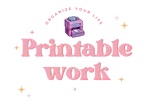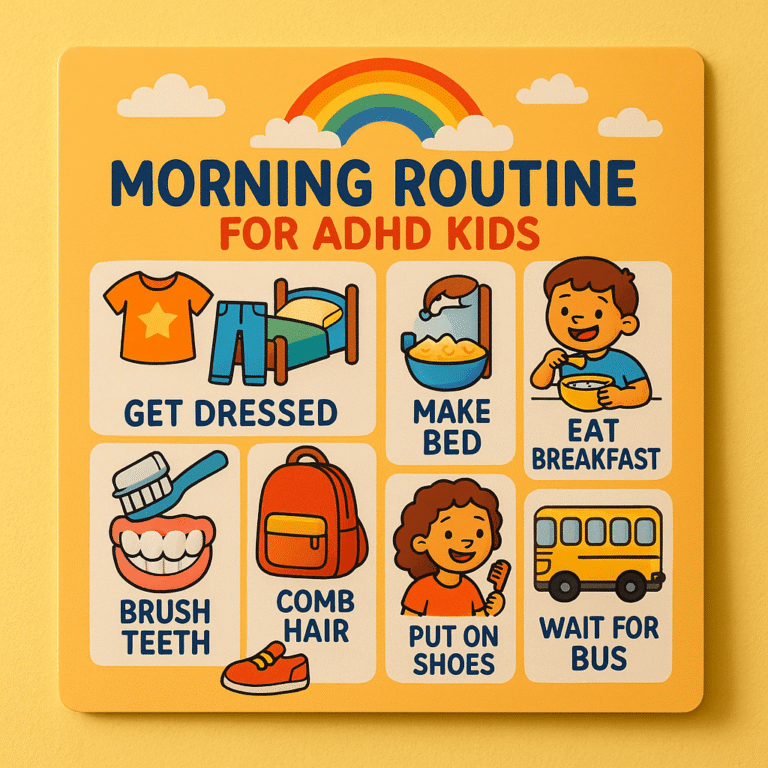If your child struggles to follow daily routines or constantly asks ?What?s next??, you?re not alone. For many kids with ADHD, the lack of structure creates overwhelm, confusion, and frequent task refusal. But there?s a simple and proven solution: a visual schedule for kids with ADHD.
By laying out each task or activity in a clear, visual format, these schedules support memory, independence, and smoother transitions, without constant reminders.
? Why Visual Schedules Work So Well for Kids with ADHD
Kids with ADHD often have difficulty with:
- Transitioning between activities
- Initiating tasks independently
- Managing time
- Processing verbal instructions
A visual schedule offers:
- ? Predictability and routine
- ? Reduced anxiety and confusion
- ? Independence from adult prompts
- ? Visual time awareness
- ? Improved behavior and focus
In short, it helps them see their day?and feel more in control of it.
?? How to Create a Visual Schedule for Kids with ADHD
? 1. Choose a Format That Matches Your Child?s Needs
There?s no one-size-fits-all. Choose from:
- Daily schedules (hour-by-hour or morning?afternoon?evening)
- Step-by-step task charts (e.g., ?Get ready for school?)
- Weekly planners with color-coded days
- First-Then boards (ideal for younger kids or meltdown-prone moments)
? Younger children or non-readers benefit from icons and illustrations, while older kids may prefer checklists or time blocks.
? 2. Start With a Simple, Repeating Routine
Don?t overwhelm your child with a full day at once. Begin with routines like:
- Morning checklist
- Homework time
- Bedtime routine
- After-school steps
? Once mastered, add more blocks or combine multiple schedules.
? 3. Use Clear Visuals and Keep Text Simple
Each activity should be:
- Short and specific: ?Brush teeth? instead of ?Get ready?
- Visual: Use clipart, real photos, or printable icons
- Color-coded for time blocks (e.g., blue = school, green = play)
? Spacing and layout matter?too much text or clutter reduces focus.
? 4. Display It in a Visible Place
Choose a central and consistent location:
- Fridge door
- Bedroom wall
- A binder or a clipboard by the desk
- Laminated version with Velcro/magnets
? Consistency helps your child form habits faster.
? 5. Review, Reflect, and Update Weekly
Check in together:
- What worked well?
- Which parts need more support?
- Can they take more control this week?
? Ownership and flexibility are key to long-term success.
? Bonus: Printable Visual Schedules
To make things easier, we?ve designed ADHD-friendly visual schedule kits that include:
- ? Morning/evening routine charts
- ? Visual daily planners
- ? Editable icons and checklists
- ? First-Then boards
- ? Canva-editable templates
? Browse Visual Schedule Printables
? External Resource:
For practical examples of visual schedules?including morning, afternoon, and bedtime routines?check out this ADDitude resource:
? Sample Daily Schedules for Kids with ADHD ? ADDitude
? Final Thought
A visual schedule for kids with ADHD isn’t just a helpful parenting hack?it?s a way to support your child?s executive function and emotional well-being.
When kids know what?s coming next, they feel calmer, more confident, and ready to take action. Whether it?s getting dressed or transitioning to homework, visual schedules build skills they?ll carry for life.
Start simple. Stay consistent. And let visuals speak louder than words. ?







